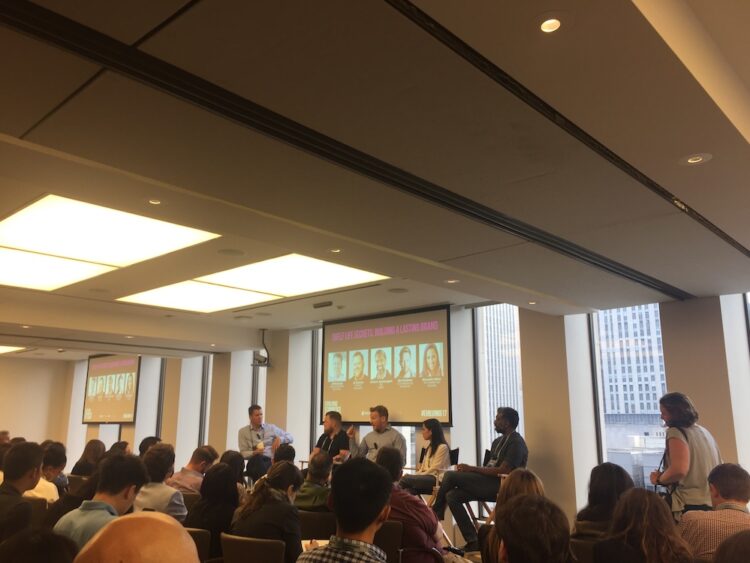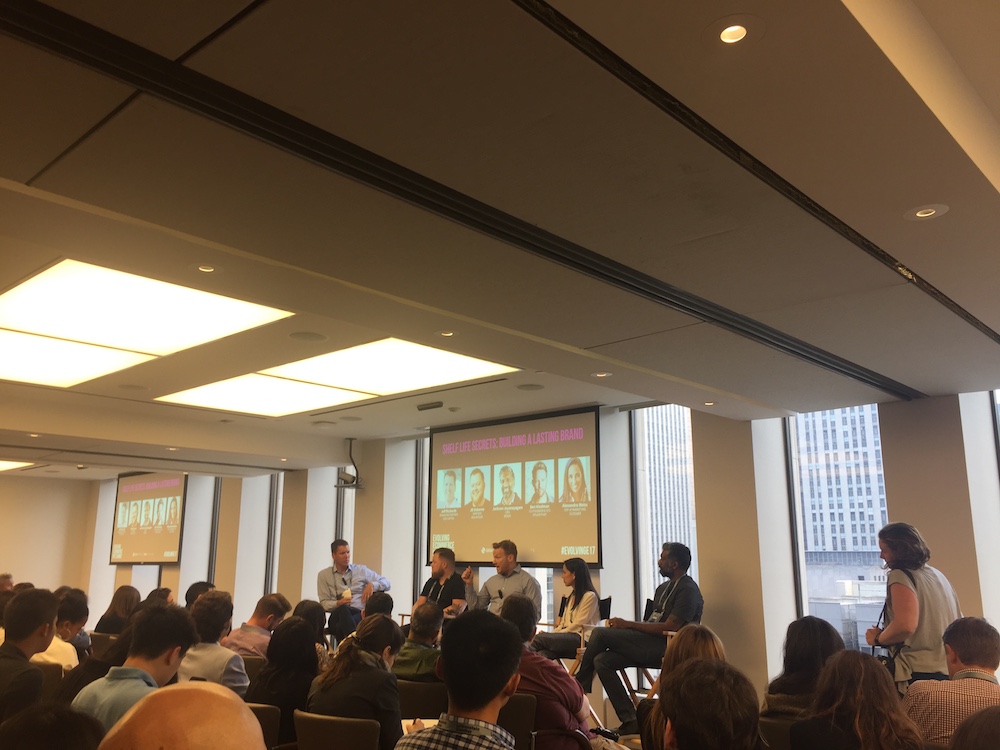There’s a lot of talk about branding lately, and for those of us looking to stay competitive in this ever changing retail market, few things seem to be as important. I recently attended “Shelf Life Secrets: Building a Lasting Brand” at the Evolving Ecommerce Summit. The half day gathering for entrepreneurs and executives focused on ecommerce, consumer goods, and retail hosted by GGV Capital.
The panel, moderated by Jeff Richards, Managing Partner at GGV Capital, included JB Osborne, Partner, Red Antler, Ben Hindman, Cofounder and CEO of Splashthat, Alexandra Weiss, SVP of Marketing at Glossier, and Jackson Jeyanayagam, CMO of Boxed. The panel started with a conversation where to focus and spend money on when you’re early stage. Osborne argued that the most important thing is to start off with a clear, strong brand story focusing on a deep understanding of your customers. With so many new products launching every day in the market place, he offered, the only way to keep up is to tell a unique story.
Weiss shared that Glossier started with their branding first, with a goal of “building the brand for the creator generation.” That led to an authentic opportunity for them both to create content for themselves, but also to allow their customers to create content with and for them. By involving the customers so intimately in the branding of the company, there’s a built-in feedback loop for their content.
As for what helps you stay on brand, Jeyanayagam was adamant on the product experience being first, always. Marketing comes second. If you don’t have an amazing product and customer experience, he argued, no amount of marketing can save you. Hindman added that you never want to iterate on your brand, but you can iterate on your products and evolve your brand. Eventually the brand will “leave your hands and become your people’s brand, and they need to tell their story.” A brand needs to be personal, needs to feel and look human, he shared.
Engagement was a big topic of conversation. Jeyanayagam explained that it is imperative to focus and target customers on each channel. For example, at Boxed, he shared, their packaging is notable, so it encourages their customers to share when they get a box. They also did a huge campaign on NYC garbage cans that stuck in people’s memory far after they were removed. By creating that credibility, he argues, once you see an ad on Facebook, there’s already a level of trust and willingness to explore that offering. Startups, he shared “have much more reliance on gut and heart” when it comes to marketing and engagement.
Engaging offline also came up, and Handyman shared that more and more brands are doing events in store to attract the right people. Weiss agreed, adding that it’s all about the personal interaction. It’s about creating an experience, and not necessarily focusing on getting your customer to buy in the store. There needs to be a place for customers in between their purchases, Weiss argued, and having events of a physical place allows customers to take action with the brands.
Lastly, there was an interesting conversation around public relation. Weiss shared that at Glossier they run everything in house, and approach everyone as an editor, including someone who works at the New York Times as well as someone with 400 Instagram followers. Everyone has their own unique platform, and those should all be taken advantage of. Your partners, Weiss shared, “are your microphone.”
Osborne felt that PR is absolutely critical, however, it is what you put into it. It is imperative to set your own objectives, and doing it in house is ideal. PR, he shared, “is about content strategy and editorial.” If you do it in house, he said, you can “drive the story yourself.”
When asked about affiliate marketing, the panelists all agreed that it’s an “icing on the cake,” type of situation, as explained by Weiss. Jeyanayagam shared that he loved affiliates because AOV is strong and you get high quality customers.
Overall it was a highly interesting panel with different angels and businesses that have approached marketing from different perspectives while all gaining massive loyalty and fan bases. With a focus on a clear brand story, empowering your users to be your content generators, and putting out clear, brand aligned messages, the panelists argued that you should be able to do the same.




